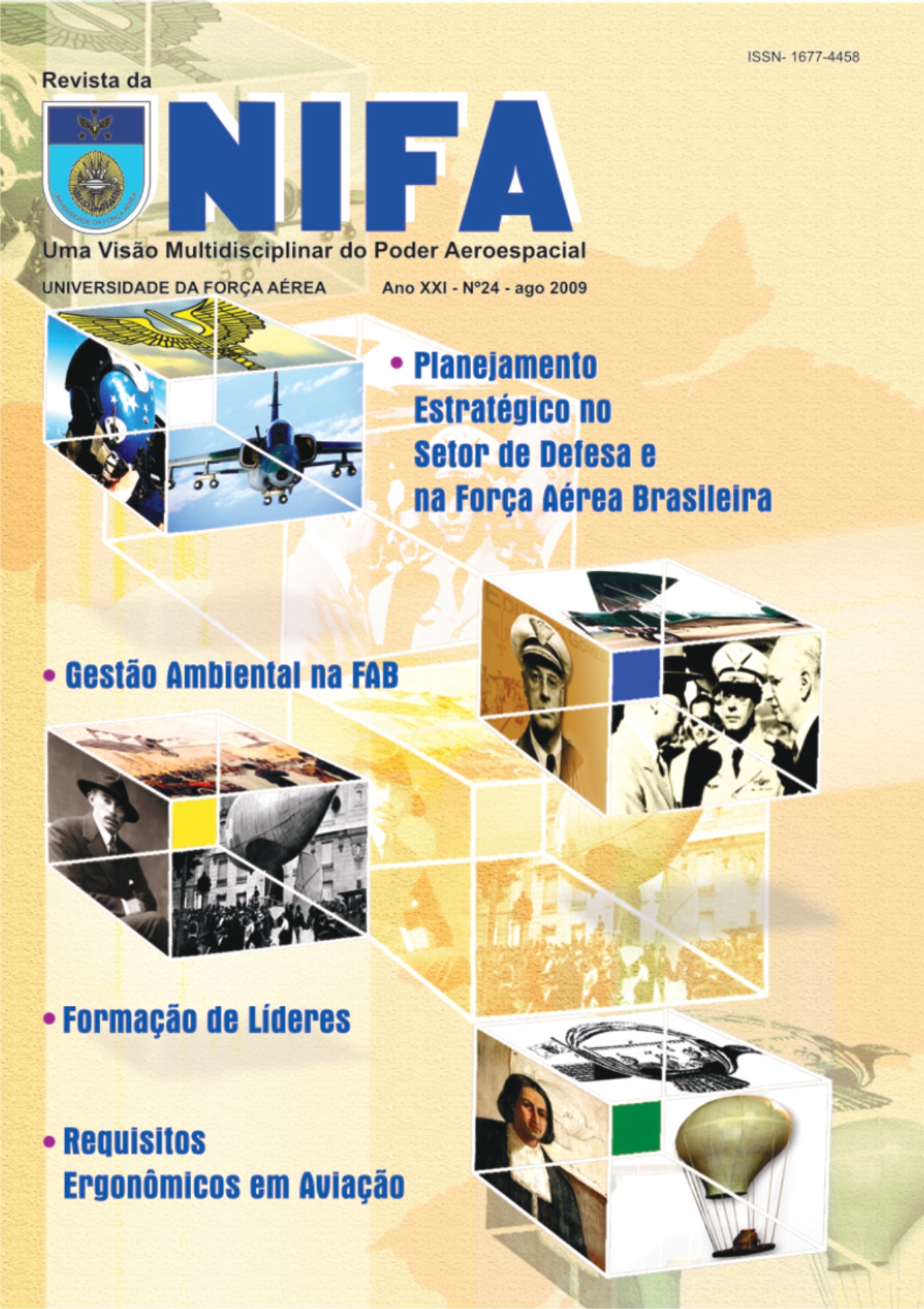Lições da Campanha de Interdição no Vietnã
DOI:
https://doi.org/10.22480/revunifa.2009.21.772Palavras-chave:
Poder Aéreo, Interdição, Guerra do Vietnã, Lições aprendidasResumo
Estudos recentes produzidos em diferentes nações concluem que um dos mais prováveis cenários em que as Forças Armadas estarão envolvidas no futuro é o de guerra irregular. Com relação à Força Aérea, conflitos recentes também demonstraram a crescente presença de dois outros aspectos: restrições políticas, por diferentes razões; e o desejo de empregar o Poder Aéreo, ao menos inicialmente, como forma de evitar o comprometimento de tropas terrestres. Essas foram também as circunstâncias em que foi travada a Guerra do Vietnã, um conflito no qual a Interdição Aérea teve um papel preponderante. Este artigo avalia a eficácia da Interdição naquele evento histórico em particular. Por meio de uma análise crítica da literatura, conclui-se que, em determinadas circunstâncias, o esforço de interdição no Vietnã pode ser considerado um sucesso no nível tático, muito embora nunca o tenha sido no nível estratégico. Finalmente, tendo identificado lições que se mantêm ao longo do tempo, este artigo apresenta dez proposições que podem ser úteis aos futuros Comandantes de nível Operacional.
Referências
CLODFELTER, M. The limits of air power. Lincoln: University of Nebraska, 2006.
DeGROOT, G. A noble cause? America and the Vietnam War. London: Longman, 2000.
DEWS, E.; KOZACZKA, F. Air interdiction: Lessons from the past campaigns. Santa Monica: Rand, 1981.
GATES, J. Vietnam: The debate goes On. In: MATTHEWS, L.; BROWN, D. (Ed.). Assessing the Vietnam War. Aylesbury: Pergamon-Brassey’s, 1987. p. 43-56.
GUILMARTIN, J. Bombing the Ho Chi Minh Trail: a preliminary analysis of the effects of air interdiction. Air Power History, n. 38, p. 3-17, inverno 1991.
HEAD, W. War from above the Clouds. Maxwell: Air University Press, 2002.
HERRING, G. America’s longest war: the United States and Vietnam, 1950-1975. New York: John Wiley, 1979.
HIGGINS, J. Military movements and supply lines as comparative interdiction targets. Santa Monica: Rand, 1970.
HORWOOD, I. Interservice rivalry and airpower in the Vietnam War. Fort Leavenworth: Combat Studies Institute, 2006.
KOHN, R.; HARAHAN, J. Air interdiction in world War II: Korea and Vietnam. Washington, DC: Office of Air Force History, 1986.
LEARY, W. Ho Chi Minh Trail. In: TUCKER, S. (Ed.). Encyclopedia of the Vietnam War Santa Barbara: ABC-CLIO, 1998. p. 289-291.
LEWY, G. America in Vietnam. New York: Oxford University, 1978.
MANN, R. A grand delusion: America’s descent into Vietnam. USA: Basic Books, 2002.
MARK, E. Aerial interdiction in three wars. Washington, DC: Center for Air Force History, 1994.
MOMYER, W. Air Power in Three Wars. Washington, DC: US Government Printing Office, 1978.
NALTY, B. The war against trucks: aerial interdiction in southern laos, 1968-1972. Washington, DC: U.S. Government Printing Office, 2005.
PAPE, Jr., R. Bombing to win: air power and coercion in war. Ithaca: Cornell University, 1996.
______Coercive air power in the Vietnam war. International security, v. 15, n. 2, p. 103-146, 1990.
SCHELLING, T. Arms and influence. New York: Yale University, 1966.
TILFORD, JR., E. Operation commando hunt. In: TUCKER, S. (Ed.). Encyclopedia of the Vietnam War. Santa Barbara: ABC-CLIO, 1998a. 129 p.
______Operation rolling thunder. In: TUCKER, S. (Ed.). Encyclopedia of the Vietnam War. Santa Barbara: ABC-CLIO, 1998b. p. 617-620.
______Setup: What the Air Force did in Vietnam and Why. Maxwell: Air University, 1991a.
______Setup: Why and How the U.S. Air Force Lost in Vietnam. Armed forces and society, v. 17, n. 3, p. 327-342, 1991.
______United States: Air Force. In: TUCKER, S. (Ed.). Encyclopedia of the Vietnam War. Santa Barbara: ABC-CLIO, 1998c. p. 715-718.
Downloads
Publicado
Edição
Seção
Licença
Copyright (c) 2009 Enio Beal Júnior

Este trabalho está licenciado sob uma licença Creative Commons Attribution-NonCommercial 4.0 International License.
Revista da UNIFA permite que o (s) autor (es) mantenha(m) seus direitos autorais sem restrições. Atribuição-NãoComercial 4.0 Internacional (CC BY-NC 4.0) - Revista da UNIFA é regida pela licença CC-BY-NC









